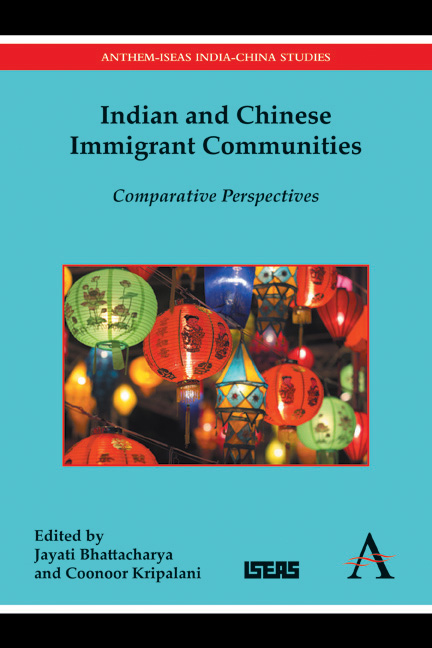Book contents
- Frontmatter
- Contents
- Foreword
- Acknowledgements
- Introduction
- Section I Historical Antecedents and the Question of Nationality
- Section II The Meeting Ground: Indians and Chinese in Southeast Asia
- Section III Indians in China and Chinese in India
- 11 Law and Its Impact on Diasporic Philanthropic Institutions: The Practices of Sinchew and the Waqs in the Straits Settlements
- 12 Indian Soldiers and Policemen in China in the Colonial Period
- 13 New Indian Migrants in Guangzhou and Its Vicinity
- 14 Who Is a Chinese-Indian? Search for the Cultural Identity of the Chinese-Indians in Kolkata, Sihui and Toronto
- Section IV Across the Globe: Indian and Chinese Diasporas
- Postscript Shifting Worlds and Changing Identities: The Reshaping of the Chinese-Indian Communities in India after the 1962 “Sino-Indian Incident”
- List of Contributors
- Index
13 - New Indian Migrants in Guangzhou and Its Vicinity
from Section III - Indians in China and Chinese in India
Published online by Cambridge University Press: 05 December 2015
- Frontmatter
- Contents
- Foreword
- Acknowledgements
- Introduction
- Section I Historical Antecedents and the Question of Nationality
- Section II The Meeting Ground: Indians and Chinese in Southeast Asia
- Section III Indians in China and Chinese in India
- 11 Law and Its Impact on Diasporic Philanthropic Institutions: The Practices of Sinchew and the Waqs in the Straits Settlements
- 12 Indian Soldiers and Policemen in China in the Colonial Period
- 13 New Indian Migrants in Guangzhou and Its Vicinity
- 14 Who Is a Chinese-Indian? Search for the Cultural Identity of the Chinese-Indians in Kolkata, Sihui and Toronto
- Section IV Across the Globe: Indian and Chinese Diasporas
- Postscript Shifting Worlds and Changing Identities: The Reshaping of the Chinese-Indian Communities in India after the 1962 “Sino-Indian Incident”
- List of Contributors
- Index
Summary
With the continuous development of China's economy, more and more foreigners have come to China as short-term visitors or travellers. Meanwhile, an increasing number of foreigners have settled down or set up enterprises in the local area. Among them, Indians have become a noticeable group with a rising population. The last ten years have witnessed the immigration to and settlement in China of people from developing countries and the phenomenon is becoming increasingly intense. Migrants have swarmed into China because, from their point of view, China is a “paradise” full of opportunities: free and open, safe and friendly, and convenient and easy to make money in. Running at the forefront of China's reform of opening up and as one of the most economically developed areas, Guangdong has always fascinated foreign migrants and investors. Guangzhou, the capital city of Guangdong Province, is especially appealing to them, being renowned as an international metropolitan city and an exciting economic hub. Nowadays, foreigners can be seen everywhere on the streets of Guangzhou. Among them, the proportion of migrants from developing countries is expanding and their number has surpassed that from developed countries. There are many foreigners living in residential districts, as well as in the outskirts of Guangzhou. The increase of immigration from developing countries has not only brought vitality to the Guangdong economy, but also resulted in many problems. Many of these people are illegal migrants and overstayers engaged in criminal activities. The Indian migrants are different from migrants from both developing and developed countries. This group presents its own characteristics which are worthy of special attention.
This paper aims to provide a systematic and comprehensive description of the Indian migrants in Guangzhou and its vicinity on the basis of fieldwork. There are many Indians living in Shenzhen, Dongguan, Zhongshan and Sanshui. Due to Sanshui's proximity to Guangzhou, the livelihood and business activities of Indians living there can be regarded as part of the larger Guangzhou metropolis.
- Type
- Chapter
- Information
- Indian and Chinese Immigrant CommunitiesComparative Perspectives, pp. 197 - 218Publisher: Anthem PressPrint publication year: 2015



